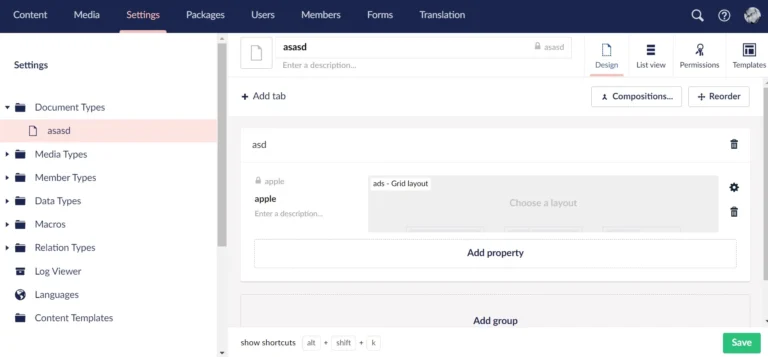Squarespace is a Software as a Service that enables users to build and launch websites quickly. It was founded in 2004 and has over 3 million subscribers. WP is an open-source content management system that powers around 40% of websites on the internet. It is used by the most prominent news services and corporations and is a favorite blogging tool of millions.
Squarespace is an alternative to various website builders that you will find on the internet. It is good software but has some limitations and drawbacks. It is also inferior to WordPress in 3 to 4 departments. These 3 to 4 departments are crucial for webmasters/site owners, and this is the primary reason why people switch from Squarespace and other site builders to WP. Squarespace has a great editor that lets you put various elements on the pages of a theme. Is WordPress better than it or vice versa? Which tool is best for building blogs or eCommerce sites? Which tool offers more features? Let’s find it out!
Pricing
Squarespace is one of the costliest website builders available on the internet. It offers four subscription plans – Personal, Business, Basic Commerce, and Advanced Commerce. The eCommerce plans are priced between a whopping 46 to 40 dollars per month. The Personal plan costs 12 dollars per month if you subscribe to its annual plan else, you will have to pay 16 USD/month. The Business plan costs 18 dollars per month when you purchase the annual version of the plan. If you choose the monthly payment option, you will have to pay 30% extra.
The cost of the self-hosted version of WordPress depends on the hosting, themes, and plugins you choose to power your website. The subscription fee for most premium plugins is between 13 to 49 dollars, and the themes may cost between 20 to 99 dollars. Some developers offer annual subscription plans, and others provide lifetime subscription plans i.e. you won’t have to renew a theme when you buy its license. When it comes to hosting, you can go for these three hosting services – managed, unmanaged, and shared. The managed WordPress hosting plans are priced between 10 and 125 dollars per month. Cloudways, for example, has managed WP subscription plans that cost a minimum of 10 dollars per month. Shared hosting plans are priced between 2.25 and 13.0 dollars per month. The Hatchling or Baby plan costs between 2 to 3.5 dollars. Bluehost Basic and Choice Plans will cost you between 2.5 and 3.5 dollars.
Let’s talk about eCommerce. Squarespace offers two special subscription plans – Basic Commerce and Advanced Commerce. These two plans are priced at 26 and 40 dollars per month if you pick their annual subscription and 25% more if you buy their monthly subscription plan. WooCommerce, like the WordPress content management system, is free. Many companies offer cheap cloud hosting plans that will enable users to launch one or more WooCommerce sites. For example, the Hostgator cloud hosting plans cost between 4.95 and 15 dollars.
WoCommerce is free, and you will find many free plugins for WooCommerce in the WordPress repository. You can also create great-looking product pages and product category pages without paying a dime by using page builders such as WPBakery or Elementor, or any other page builder of your choice.
Editor
Squarespace had the upper hand over WordPress until WP retired the classic editor and bought the Gutenberg editor. Its editor and Gutenberg are very similar. You can add elements or blocks quickly at a place of your choice and customize them. In addition to the Gutenberg editor, WordPress offers a live WP customizer tool where themes add customization options.
Themes
Squarespace template library comprises 100 to 200 templates. The templates are beautiful, but you can’t customize them to a great extent. WordPress theme repository alone has over 4000 themes. The top-rated templates you find in the WP repository are highly customizable. Some of the themes have hundreds of options, and with page builders, the options can be 1000s, as you can design the page any way you want.
Plugins
Like the WP theme repository, WordPress has a repository for plugins. The repository has hundreds of thousands of plugins. The plugins can add new features to your WP site, boost the site’s performance, increase conversion rate, and more. Squarespace gives you access to a bunch of extensions.
Also see: Bluehost vs Wix
Control
Squarespace subscription plans will only give you access to their website builder tool. You won’t be able to log in to the server. If you’re using WordPress, you get to learn various commands of Linux, HTML, CSS, and PHP (if you are willing to learn). Once you have gained knowledge of the web technologies we’ve shared in the above line, you can make changes to the theme or plugin. On Squarespace, you can’t make changes to the pre-designed templates.
Security
As Squarespace is a Software as a Service and the company has control of every bit of data and files of its sites/editor, it is highly secure. If you host WordPress CMS by yourself, you must take care of the security of your website by taking some measures. If you take action, your site will never be hacked. What if you don’t take measures? If the site gets hacked, you will have to find and fix the issue. If you’re unable to do so, you may have to hire someone to fix the site.
Fortunately, some website hosting companies offer a free malware removal service. Companies also guide users in fixing hacked sites. Squarespace leaves no stone unturned in securing its platform. It enables you to activate two-factor authentication with a few clicks of a button. Free WordPress plugins can add various layers of security to the site. For example, in Wordfence vs Sucuri comparison, we’ve shared that Wordfence protects a website from brute force protection and also lets you enable 2-factor authentication.
Closing words: Squarespace has a good editor, but it doesn’t offer too many options when it comes to themes and extensions. Also, it seems to be overpriced. The cost of hosting a WordPress or a WooCommerce site is half or lower than that of Squarespace. WP offers more themes and plugins than its counterpart.




